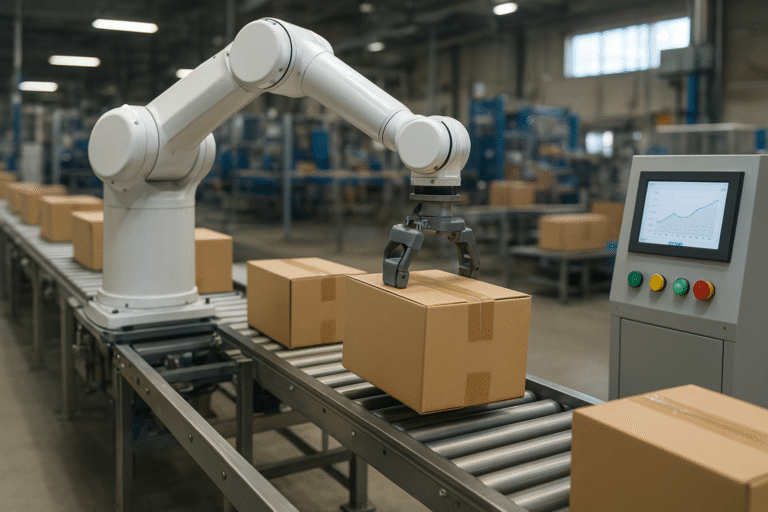Malaysia’s packaging sector is moving fast. Rising e-commerce, stricter quality standards, labour pressures, and sustainability demands are pushing manufacturers to replace legacy machines with smarter, motion-driven systems.
So, what’s driving this transformation, and how is it reshaping packaging lines across Malaysia? Let’s dive in together
1. Servo Motors Are Replacing Pneumatics
Old machines that rely on air pressure or mechanical cams are being replaced with servo-driven systems. Servos allow precise speed and position control, faster changeovers, and lower energy use.
For packaging plants that handle many product types, this means smoother operation and less downtime.
2. Robots and Cobots Are Boosting Efficiency
Robotic arms, and now collaborative robots (cobots), are helping with packing, labeling, and palletising. They can work safely with humans, improve speed, and reduce repetitive manual work.
More Malaysian factories are adopting cobots to fill labour gaps while maintaining productivity.
3. Vision + Motion = Better Quality
When machine vision is combined with motion control, packaging lines can automatically detect and correct issues like misaligned labels or missing items.
This “smart” combination helps reduce waste and ensures consistent quality, especially for export products.
4. Predictive Maintenance with Smart Data
Modern motion controllers can track vibration, torque, and temperature to predict when a machine needs service.
This helps avoid sudden breakdowns and keeps production running smoothly, a big advantage for high-volume packers.
5. Modular and Flexible Machines
With consumer demands changing quickly, packaging lines need to adapt fast.
Modular motion systems let manufacturers switch product formats or packaging sizes easily, without a full rebuild.
While motion control brings big benefits, many Malaysian manufacturers still face a few key challenges:
1. High Upfront Cost
Installing new servo systems or robotic equipment can seem expensive at first. However, many companies realise that these upgrades pay for themselves in just a few years through reduced downtime, lower energy use, and less product waste. Some factories start small, upgrading one section of the line, and expand once they see real improvements in efficiency.
2. Lack of Skilled Technicians
Advanced motion systems need people who understand servo tuning, PLC programming, and robot safety. To overcome this, many Malaysian firms are partnering with automation experts for training and support.
3. Integration with Old Machines
Not every factory can afford to replace all equipment at once. The good news is that motion control can be added step-by-step. For example, by retrofitting servo motors onto older machines or adding vision systems to improve accuracy. This “hybrid approach” helps factories modernise gradually without stopping production.
4. Change Resistance
Some operators may worry about new systems replacing jobs or being too complex to manage. The solution is simple: involve them early. When staff see how automation makes their work easier, safer, and more consistent, they become the strongest supporters of change.
The Future of Packaging in Malaysia
Motion control is no longer just “nice to have.” It’s becoming essential for:
- Faster production
- Higher accuracy
- Easier maintenance
Manufacturers that invest early will gain a strong advantage in efficiency, quality, and flexibility.
At Mirai, we help Malaysian manufacturers modernise their lines with motion control, robotics, and vision solutions. From servo retrofits to full packaging automation, we provide end-to-end integration, training, and local support.
Contact Mirai Industrial Automation today, and we’ll help you identify the best motion control upgrades to transform your production efficiency.

